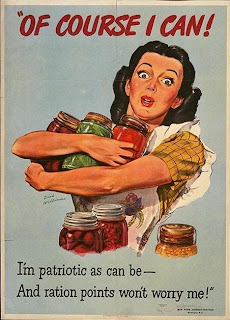This semester has challenged me in visual theory and in practice. I had very little knowledge of visual theory when the class first began. As the class continued I began to implement many of the concepts into my projects. Use of vectors and color representation were used heavily in my projects. I actually began incorporating color into my avatar before we discussed it in class. I understood--after we read about the concept--that I needed to continue in my use of black and red and also use it more frequently.
This semester challenged me in learning various software programs. I had no knowledge of Photoshop and movie software. The MovieMaker software was simple; I caught on to that quickly. With Photoshop I feel like I have a solid footing with the program and can do what I need to. With Dreameaver, I had used it before but this semester, the program frustrated me because I could not do what I wanted to do with it. I feel I was able to adapt and now have a basic knowledge of the program for future use.
At one of our STC, Bobby Rettew spoke about his time in the MAPC program and how it has helped him in his current career. He said that he appreciated the ability he now has to learn software quickly. So although more instruction in the programs would have been helpful, I understand that being able to learn software quickly can help me succeed in my future career. Different companies use different software and now I feel that I have the basics of what I might be asked to do in the future.
As far as the film, I was totally intimidated by it. I didn't know how I was going to complete the project and assumed it would take me hours to produce 30 seconds. I surprised myself and thoroughly enjoyed writing my script, filming the footage and putting the pieces together.
One of the biggest challenges for me this semester was learning how to express an abstract idea in concrete visual way. I had to learn visual concepts quickly in order to be successful in my expression of fear.
Monday, April 27, 2009
What I have learned this semester . . . .
Posted by Heather at 2:42 PM 0 comments
Thursday, April 23, 2009
Wednesday, April 15, 2009
Chapter Seven
Visual components are an intregral part of the branding process. The authors dicuss this in the beginning of chapter seven, "In visual communication, similarly, the material production of a design is not of the execution of something already complete, but a vital part of meaning-making" (215). This reminds of the Tropicana carton redesign. Apparently people have been complaining to Pepsi, Tropicana's parent company about the design. After just six weeks the company is going drop the design.

 This workplace sign uses orange to convey the message and also shows the red barrel in the background. Both colors or alarm or caution.
This workplace sign uses orange to convey the message and also shows the red barrel in the background. Both colors or alarm or caution.

Posted by Heather at 1:47 PM 0 comments
Wednesday, April 8, 2009
Chapter 5 Modality
Coding orientation is dicussed on page 163. One statement that the authors make is concerning the social construction of refering to items or problems in terms that relate to sight. " Behind this, in turn, is the primacy which is accorded to visual perception in our culture generallly. Seeing has, in our culture, become synonymous with understanding" (163). We use sight terminology to rate or assign a degree to the ownership of an idea or understanding.
Another factor of modality is the color of the visual image. "It is here that the affective values of colours come into their own, for example. The emotive colour is sometimes seen as a general characteristic of colour" (165). I discussed this issue in the first subproject involving my avatar. I chose black and red because of the emotions and characteristics that they represent and how I wanted my avatar to convey the message that the colors embody. The meaning of the colors chosen, can make a statement (high modality) about the object in question.

Modality can be altered due to the social characteristics of a culture or society. For example the color dicussion mentioned above. In Western cultures a bride wears white at a wedding but in India the bride wears red and that culture wears white for funerals. The cultural context where the visual is percieved can change the the strength of modality. "This is why we see modality as interactive, rather than ideational, as social, rather than as a matter if some independently given value" (171).

Happy Easter!
http://people.clemson.edu/~hwitmer/fear/
Posted by Heather at 6:07 PM 0 comments
Thursday, April 2, 2009
Chapter 4
On page 117 the authors dicuss representation and vectors in regards to the way the person is viewed in the picture. "There is, then, a fundamental difference between pictures in which this is not the case. When represented participants look at the viewer, vectors, formed by participants'eyelines connect the participants with the viewer. Contact is established only on an imaginary level." I had never really looked at the eyes as vectors or seen the meaning behind they way a person is positioned in the picture. But as the picture on page 117 the eyes create a connection and provide a vector effect for the viewer.


Posted by Heather at 9:45 AM 0 comments